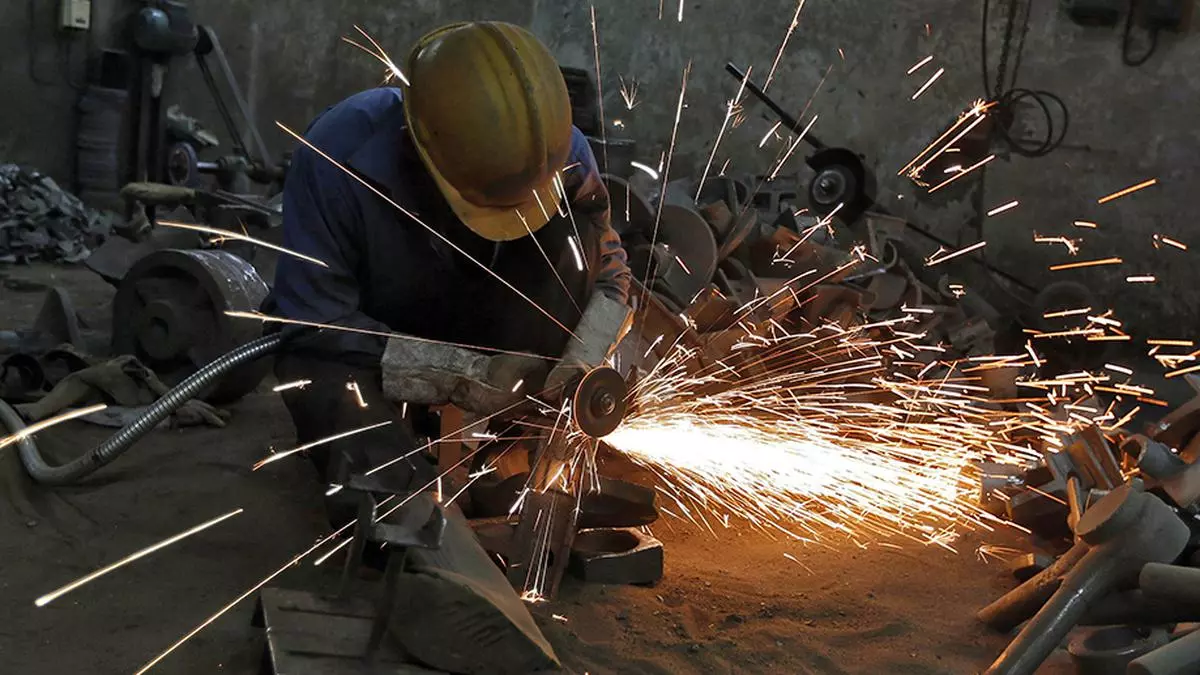With better performance in both manufacturing and services, the HSBC Composite Purchasing Managers’ Index (PMI) rose to a seven-month high of 61.5 in February, up from 61.2 in January. However, there is not-so-good news on the job front.
“New export orders rose sharply, particularly for goods producers. Input prices rose at the slowest pace in three-and-a half-years. Producers were able to do both – lower the rate of increase in output prices and improve margins,” Pranjul Bhandari, Chief India Economist at HSBC said. The Flash Manufacturing PMI touched 60.4 in February, compared to 59.7 of January. Simultaneously, the Flash Services PMI climbed to 62 from 60.4.
- Also read: HSBC Flash India Composite PMI Output Index at 4-month high of 61.0 in January 2024
Normally, PMI data is released during the first week of the month. However, flash data is now being prepared to ascertain the trends of private business in India. Manufacturing and services, together, have a share of around 70 per cent in Gross Value Added (GVA).
The flash PMI is prepared by S&P Global from responses to questionnaires sent to survey panels of around 400 manufacturers and 400 service providers. The panels are stratified by detailed sector and company workforce size, based on contributions to GDP. The services sector is defined by S&P Global as consumer (excluding retail), transport, information, communication, finance, insurance, real estate, and business services. Index above 50 means expansion and below 50 indicates contraction.
Talking about job scenario, a report, released along with indices, noted that despite the ongoing growth of new orders, private sector companies in India refrained from recruiting extra workers during February. “Payroll numbers were unchanged since January, thereby ending a 20-month sequence of job creation. Anecdotal evidence suggested that workforces were sufficient for current requirements,” it said. It may be noted that manufacturing is considered the biggest job multiplier.
- Also read: India’s January Services PMI hits 6-month high
Meanwhile, there was some positive development on the price front. The report said that the rate of charge inflation for Indian goods and services receded to the weakest in a year, as companies generally observed a lack of cost pressures. Input prices increased at the slowest pace in three-and-a-half years.
The report highlighted that new orders came from both the domestic and global markets, though the later had performed better. “International markets again made a positive contribution to companies’ order books, as seen by the fastest expansion in new export work since last September,” the report said. Further, the upturn was led by goods producers. External sales were reportedly fuelled by stronger demand from clients based in Africa, Asia, Australia, Europe, the Americas, and the Middle East, added the report.
However, not everything is well as overall level of business confidence slipped from January’s four-month high, but remained indicative of a robust degree of optimism towards growth prospects. Positive sentiment was pinned on hopes that market conditions will remain favourable, thereby boosting demand for goods and services and subsequently supporting economic output. At the sub-sector level, there were contrasting trends for business sentiment as fading confidence at service providers compared with the strongest degree of optimism at manufacturers since December 2022, the report said.

